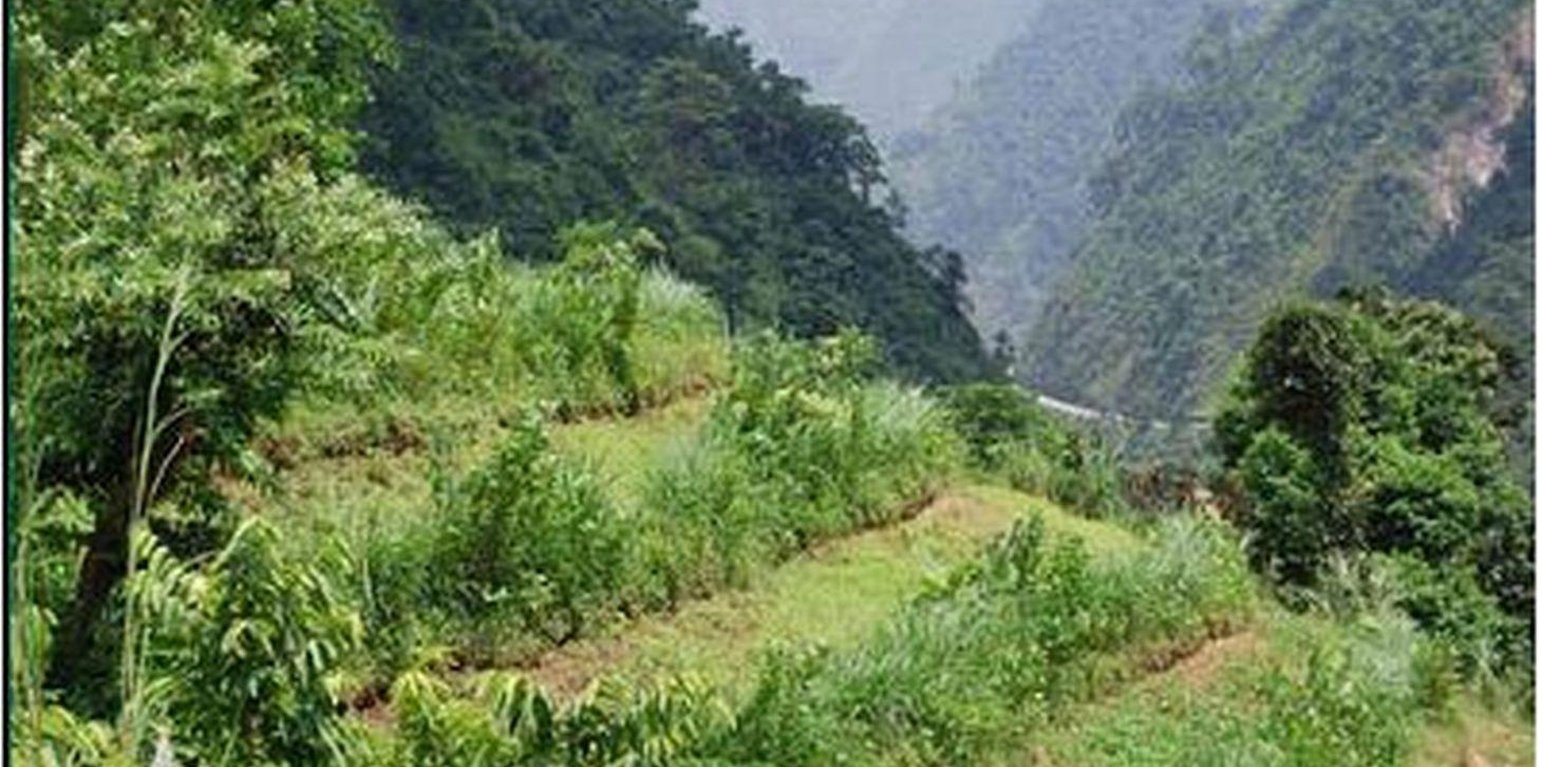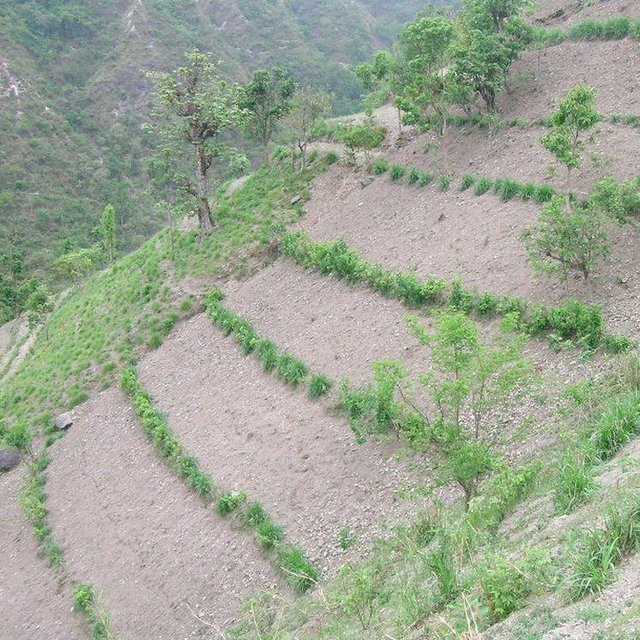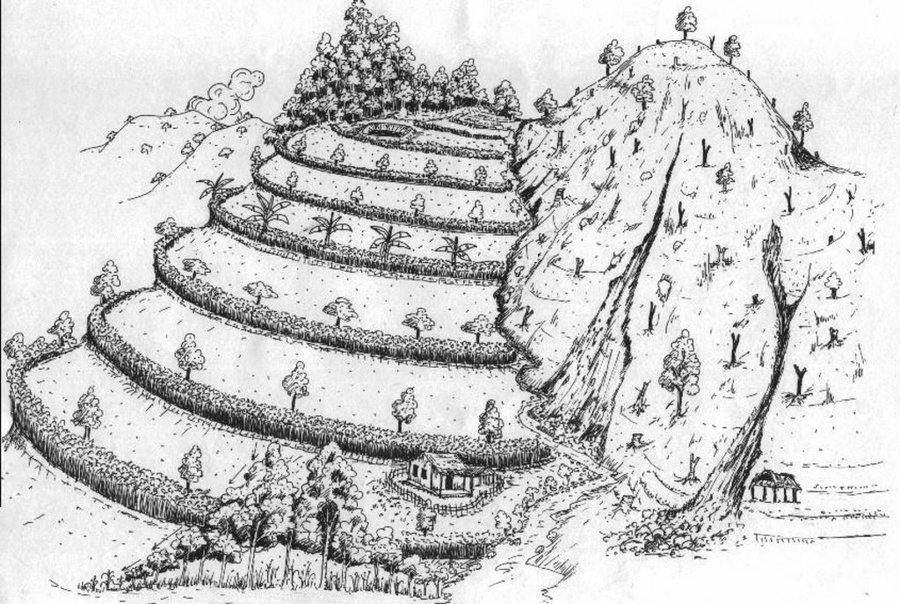



Hedgerow technology provides options and opportunities for farmers working on sloping land. These hedgerows are a soil conservation measure but they also help to generate additional biomass and fodder and/or income for marginal farmers; in addition, they offer the added benefit of helping to balance the ecosystem and to address climate change by encouraging biodiversity. This improved version of a local technology makes maximum use of indigenous knowledge and adds to it by making available the latest scientific knowledge.
Purpose of the Technology: Farmers have traditionally selected plants for hedgerow cultivation based on practical considerations such as the availability of seeds and seedlings, how well seeds germinate, how well the plants grow and how well they can be coppiced, their branching habit, the amount of biomass they can produce, and how much cash the crop can generate. They made these choices without the benefit of any external input or scientific knowledge, relying solely on what they have been able to observe locally over the years. The participatory technology development process aims to help farmers by providing them with scientific input to augment their traditional knowledge on the selection, plan, and design of hedgerows. Over a very short time, the farmers learn to make good use of the new information and start enjoying the benefits that the improved agriculture yields in terms of social, economic, and environmental benefits.
Establishment / maintenance activities and inputs: The following steps outline how hedgerows can be established on sloping land:
• A participatory designing and planning process is used to choose which sloping lands will be cultivated and to select which hedgerow species are to be planted. Trained manpower is recruited with the help of farmers and other related stakeholders.
• The necessary materials such as A-frames, seeds, and seedlings are prepared.
• The technology is implemented in the field by trained manpower.
• The hedgerow seedlings are regularly maintained.
• The land users participate in periodic monitoring and evaluation of the technology. They report on progress and provide feedback.
地点: Gorkha, Tanhun, Chitwan, Makwanpur, Nawalparasi, Dhading district, 尼泊尔
分析的技术场所数量:
技术传播: 均匀地分布在一个区域 (approx. 1-10 平方千米)
在永久保护区?:
实施日期:
介绍类型







| 对投入进行具体说明 | 单位 | 数量 | 单位成本 (美元) | 每项投入的总成本 (美元) | 土地使用者承担的成本% |
| 劳动力 | |||||
| Prepare and plant along the contour lines | persons/day/ha | 10.0 | 2.7 | 27.0 | 100.0 |
| 设备 | |||||
| Tools | ha | 1.0 | 32.0 | 32.0 | 100.0 |
| 植物材料 | |||||
| Seedlings | ha | 1.0 | 68.0 | 68.0 | 100.0 |
| 技术建立所需总成本 | 127.0 | ||||
| 技术建立总成本,美元 | 127.0 | ||||
| 对投入进行具体说明 | 单位 | 数量 | 单位成本 (美元) | 每项投入的总成本 (美元) | 土地使用者承担的成本% |
| 劳动力 | |||||
| Maintenance of hedgerows | persons/day/ha | 26.0 | 2.7 | 70.2 | 100.0 |
| 植物材料 | |||||
| Seedlings | ha | 1.0 | 34.0 | 34.0 | 100.0 |
| 肥料和杀菌剂 | |||||
| Compost / manure | ha | 1.0 | 20.0 | 20.0 | 100.0 |
| 技术维护所需总成本 | 124.2 | ||||
| 技术维护总成本,美元 | 124.2 | ||||
Reduce need for external agriculture inputs
The hedgerows provide fodder and forage for animals; selling or bartering fodder helps to diversify food sources for humans and can also be a significant source of income.